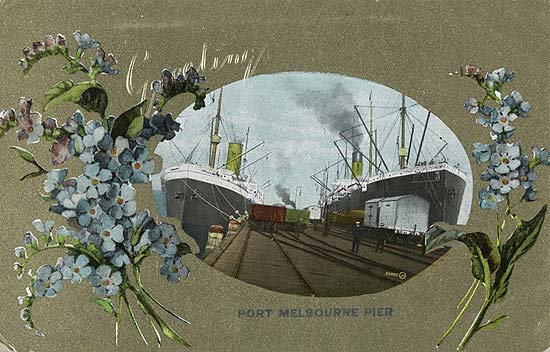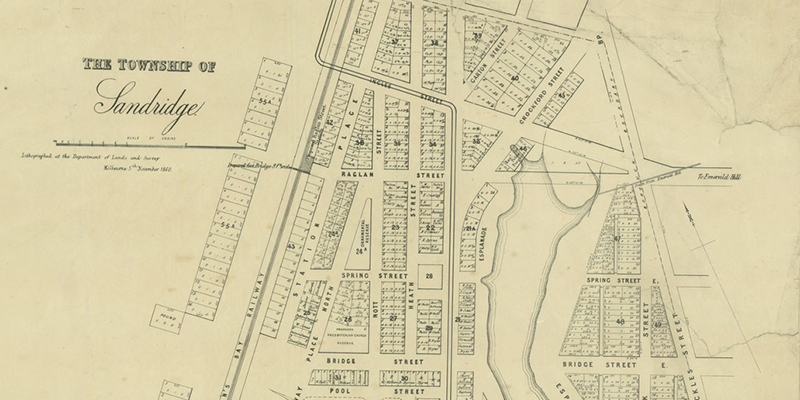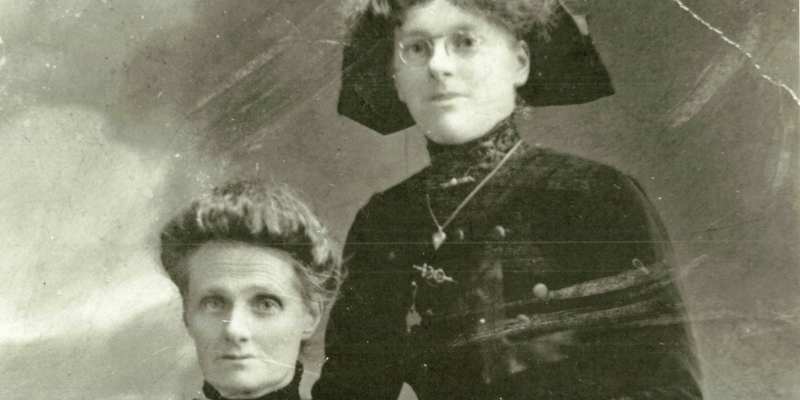Flinders St Station to Sandridge – the first journey

At 12.20 pm on 12th September 1854, the first journey of the first steam powered passenger train in Australia left Flinders Street for Sandridge.
The gold rush had made the long and convoluted journey up the Yarra River increasingly untenable. Goods had to be transferred to lighters which was expensive and inefficient. Prominent Melbourne businessmen lobbied for a railway that would offer a more direct connection from the deep water at Hobson’s Bay to Melbourne. The Melbourne and Hobson’s Bay Railway Company was formed to raise capital and oversee the construction of the new railway. Orders were placed in England for locomotives and rolling stock to suit the broad gauge of 5′ 3″.
When it became clear that the locomotives would not arrive in time for the launch event, an enterprising local engineer, James Moore, improvised a portable steam engine. It was mounted in a goods wagon with a drive mechanism added to connect through the floor of the wagon down to one pair of wheels.
The first train was made up of an open goods wagon behind the engine in which were seated members of a military brass band. Dignitaries led by the Governor, Hotham and Lady Hotham made that first journey. Three hundred guests attended the celebrations were held in a shed at Sandridge.
‘The display set forth on these tables was an agreeable surprise to those who imagined this affair was to be on the cheap and shabby system’
The speech making was extensive as befitted the significance of the occasion.
‘They were met that day to do honor not only to the officers of the present railway company but to inaugurate the system of railways – of properly paying railways – in Victoria’ (cheers)
The railway began half hourly services the next day. There were many breakdowns in the early days. The permanent locomotives arrived in December that year.
There were no Port Melbourne stations at that stage – North Port and Graham – instead the train went straight from Melbourne to Sandridge and directly onto the Pier which had been built at the same time.
The presence of the railway stimulated the growth of the many Port Melbourne industries including Swallow and Ariell built adjacent to the line.
The railway shaped the Sandridge settlement in a distinctive way with most development concentrated between the railway line and the Sandridge Lagoon.
The last train ran in 1987 when the line was converted to light rail and became the 109 service. The light rail became the centrepiece of the Beacon Cove development – an early example of an urban renewal project centred around public transport.
Another enduring legacy of that early commercial imperative was the grant of land on either side of the railway line for the railway reserves.
References and further information
Lee, R The Railways of Victoria 1854 – 2004 2007 Melbourne University Press
Argus Wednesday 13 September 1854


